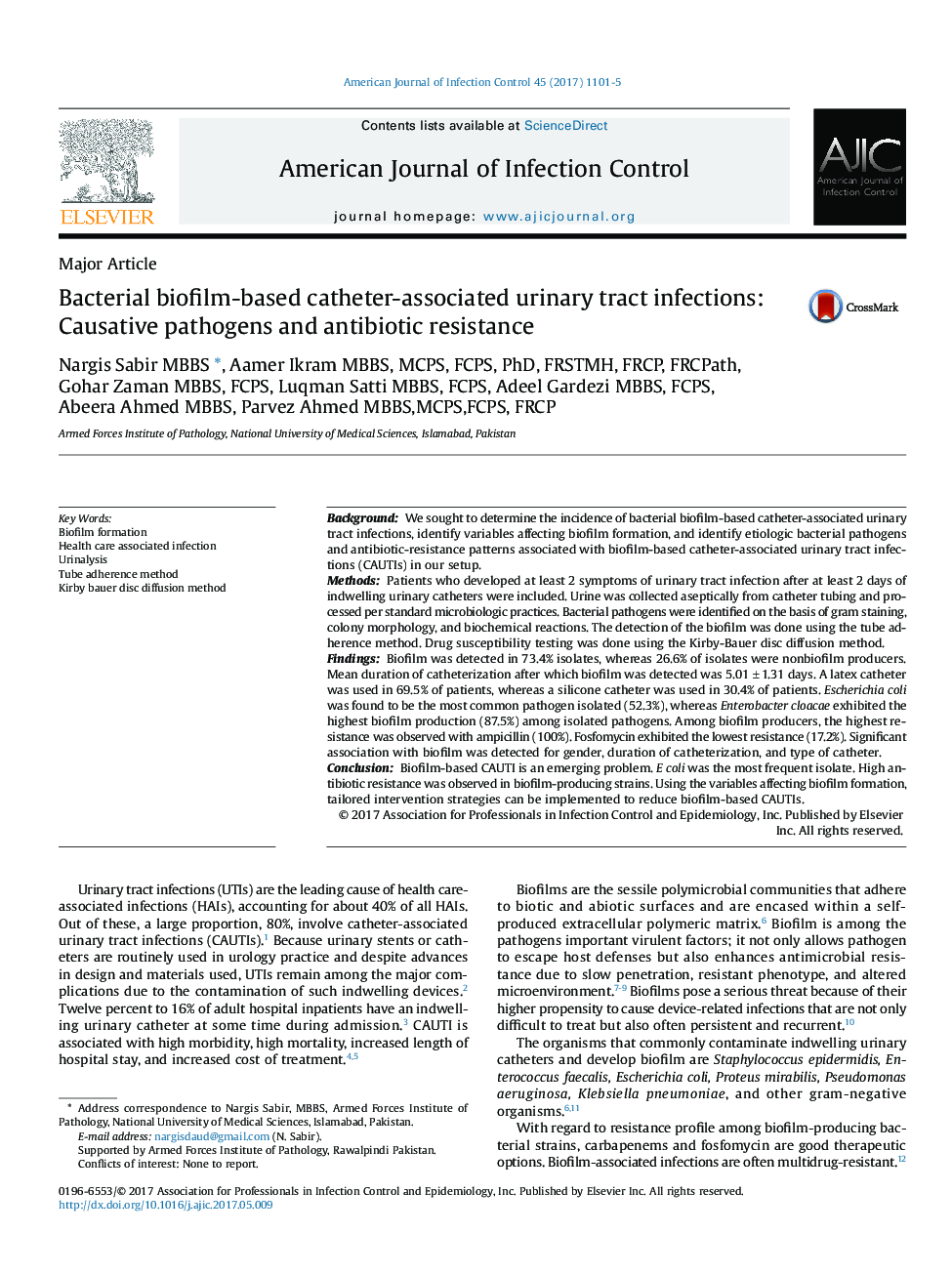| کد مقاله | کد نشریه | سال انتشار | مقاله انگلیسی | نسخه تمام متن |
|---|---|---|---|---|
| 5566172 | 1563439 | 2017 | 5 صفحه PDF | دانلود رایگان |
- Biofilm based catheter associated urinary tract infection is now an emerging problem.
- Biofilm production is greatly influenced by male gender, increased duration of catheterization and by use of latex catheter.
- E.coli is the most common isolate of CAUTI but Enterobacter cloacae exhibit highest biofilm production.
- High antibiotic resistance observe in biofilm producing strains due to slow penetration, resistant phenotype and altered micro environment.
- Good infection control policies and antibiotic stewardship are needs of hour.
BackgroundWe sought to determine the incidence of bacterial biofilm-based catheter-associated urinary tract infections, identify variables affecting biofilm formation, and identify etiologic bacterial pathogens and antibiotic-resistance patterns associated with biofilm-based catheter-associated urinary tract infections (CAUTIs) in our setup.MethodsPatients who developed at least 2 symptoms of urinary tract infection after at least 2 days of indwelling urinary catheters were included. Urine was collected aseptically from catheter tubing and processed per standard microbiologic practices. Bacterial pathogens were identified on the basis of gram staining, colony morphology, and biochemical reactions. The detection of the biofilm was done using the tube adherence method. Drug susceptibility testing was done using the Kirby-Bauer disc diffusion method.FindingsBiofilm was detected in 73.4% isolates, whereas 26.6% of isolates were nonbiofilm producers. Mean duration of catheterization after which biofilm was detected was 5.01â±â1.31 days. A latex catheter was used in 69.5% of patients, whereas a silicone catheter was used in 30.4% of patients. Escherichia coli was found to be the most common pathogen isolated (52.3%), whereas Enterobacter cloacae exhibited the highest biofilm production (87.5%) among isolated pathogens. Among biofilm producers, the highest resistance was observed with ampicillin (100%). Fosfomycin exhibited the lowest resistance (17.2%). Significant association with biofilm was detected for gender, duration of catheterization, and type of catheter.ConclusionBiofilm-based CAUTI is an emerging problem. E coli was the most frequent isolate. High antibiotic resistance was observed in biofilm-producing strains. Using the variables affecting biofilm formation, tailored intervention strategies can be implemented to reduce biofilm-based CAUTIs.
Journal: American Journal of Infection Control - Volume 45, Issue 10, 1 October 2017, Pages 1101-1105
